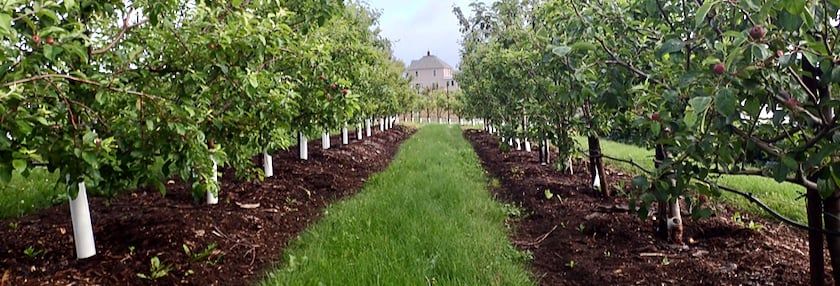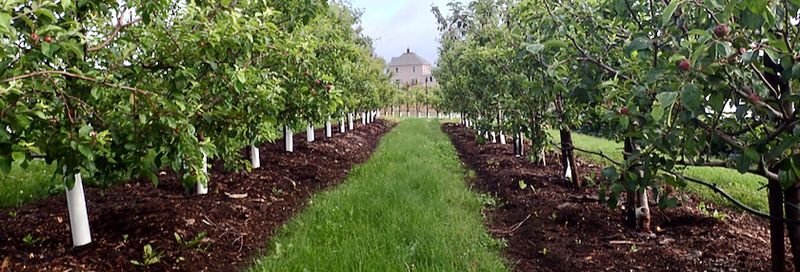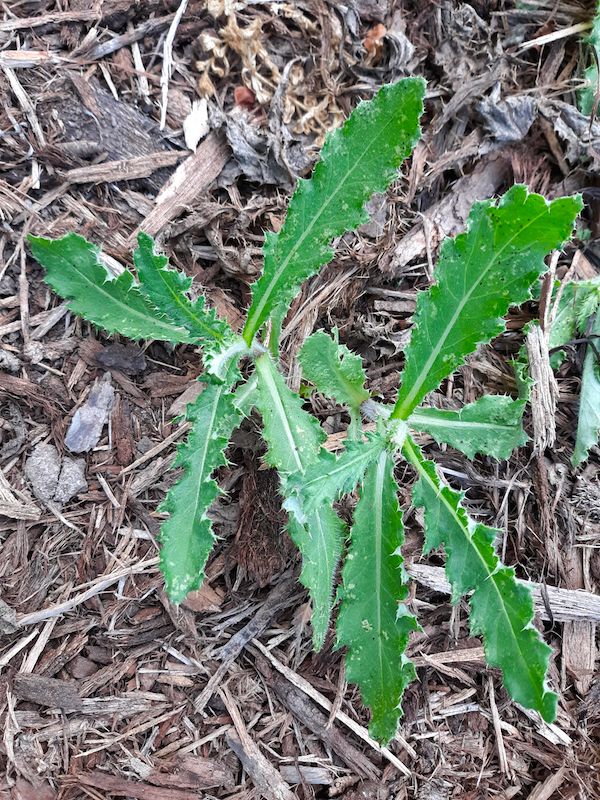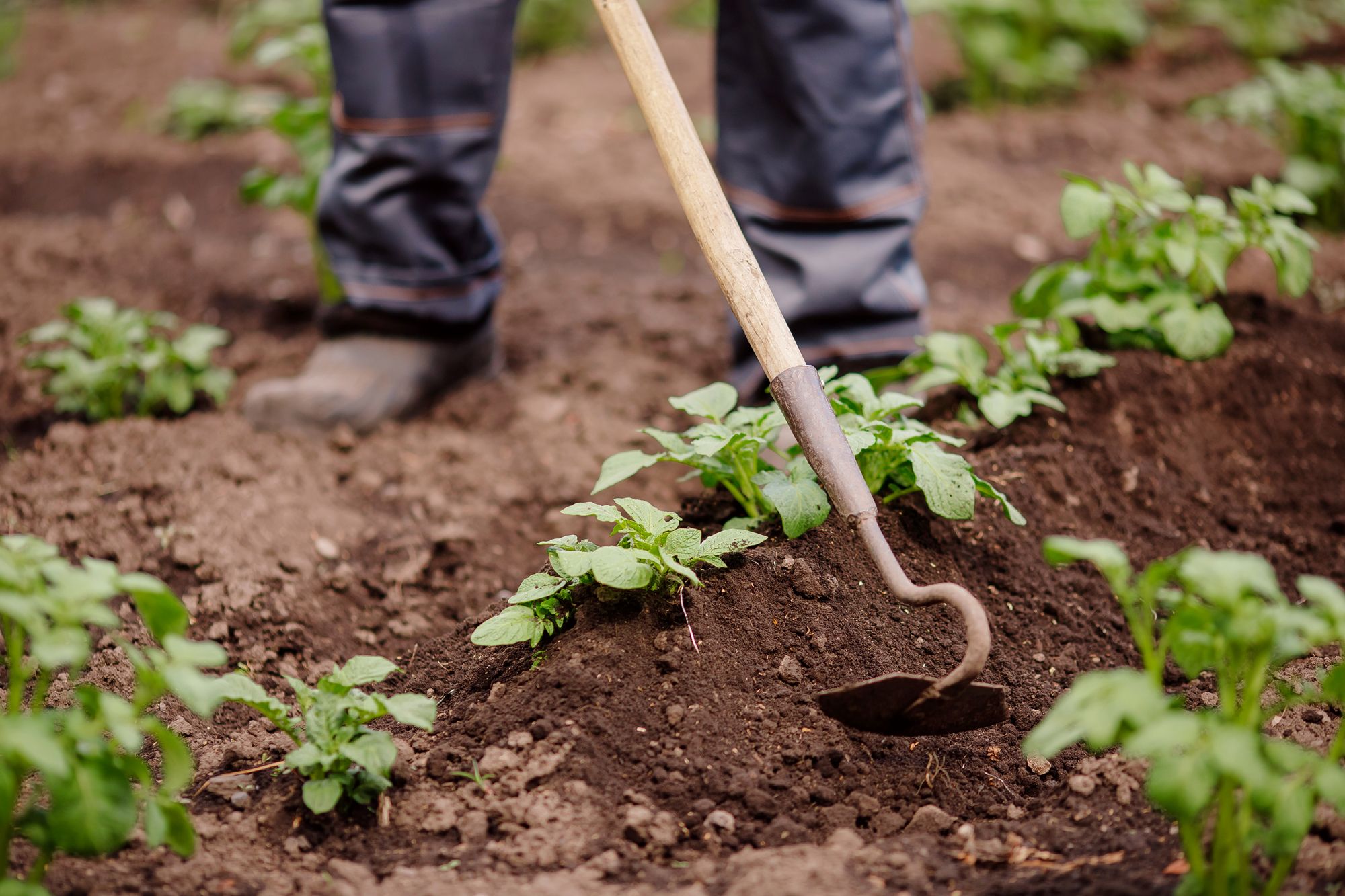Tackling Canada Thistle in an Organic Orchard


Hit it hard, hit it often…but who gives out first, you or the weed?
Organic apple growers Chris and Juli McGuire were concerned about the proliferation of Canada thistle in their Lafayette County, Wisc. apple orchard, Two Onion Farm. The McGuires raise two acres of apples together with other fruits and market them through a community-supported agriculture (CSA) program and local grocery stores.

Like most apple growers today, they raise dwarf apple trees because the compact dwarf trees are easy to work with, and they bear fruit quickly, providing a rapid return on investment.
But dwarf apple trees also have shallow roots and can’t withstand competition from weeds. In the past, the McGuires spread a thick layer of bark mulch under the trees, which keeps most weeds at bay, but they’ve struggled to control Canada thistle.
“Canada thistle is a perennial weed that spreads from deep roots,” said Chris McGuire. “Once a patch gets established in our mulch, it proliferates. It’s impossible to dig it out without uprooting the nearby fruit trees. As certified organic growers, we don’t spray systemic herbicides to kill it.”
After years of struggling with Canada thistle and watching it spread through their orchard, the McGuires received an North Central Region Sustainable Agriculture Research and Education (NCR-SARE) Farmer Rancher grant to trial organic methods for controlling the troublesome weed.

Over the 2019 and 2020 growing seasons, they reduced Canada thistle populations from over 1300 shoots to zero in experimental plots within their orchard.
“The key,” said Chris McGuire, “is that you have to kill the thistle shoots every three weeks repeatedly. They grow back, and then you kill them again three weeks later. We found that any method of killing the shoots is effective—cutting, pulling, or spraying with an (approved) organic herbicide.”
Their successful method? In the past, they would chop out thistle patches every 5-8 weeks, and that’s not often enough, he noted. “The short, three-week interval exhausts the plants and depletes their strength, gradually killing them. By the end of a single growing season, only a few straggler plants remained in our plots, and by the end of the second year, they were eradicated.”
Tackling Canada thistle
The McGuires relied mostly on manual control methods to eradicate Canada thistle on their orchard acres, but repeated work three weeks apart yielded results. Here’s what they found:
- Repeatedly killing thistle plants can be time-consuming and expensive. The McGuires tracked their time using different techniques and found that cutting the thistles close to the ground with a gas-powered string trimmer and slicing them off with a diamond hoe were the most cost-effective techniques.
- They could control Canada thistle patches within 1-2 growing seasons by repeatedly cutting down the shoots on three-week intervals.
- Hoeing and string trimming were both more efficient than hand-pulling and spraying an organic herbicide.
- Mulching with recycled cardboard underneath the usual hardwood bark mulch hastened the reduction in thistle populations but required too much time to be worthwhile.
- Hand-pulling the shoots (while wearing gloves!) was much more time-consuming.
- Spraying an organically-approved herbicide (Avenger Weed Killer brand) was quick but expensive because of the high cost of the product.
Dig deeper
The McGuires shared a report online at http://www.twoonionfarm.com/CanadaThistleFinalSummary.pdf.
Want more information? See the related SARE grant:
Organic Control of Canada Thistle in Mulched Orchards (fnc19-1181)
Tags:Weekend Farmer

Acreage Life is part of the Catalyst Communications Network publication family.
















